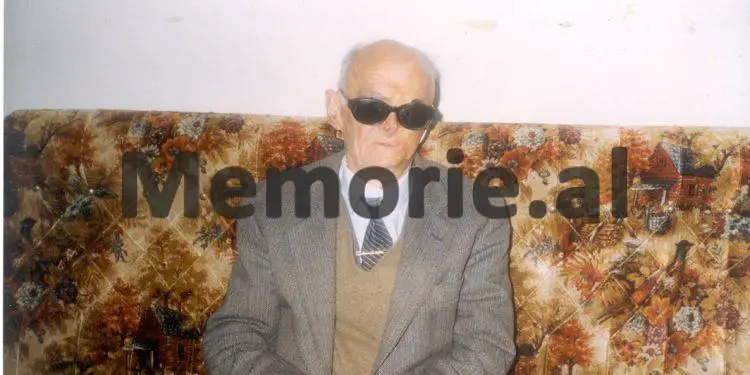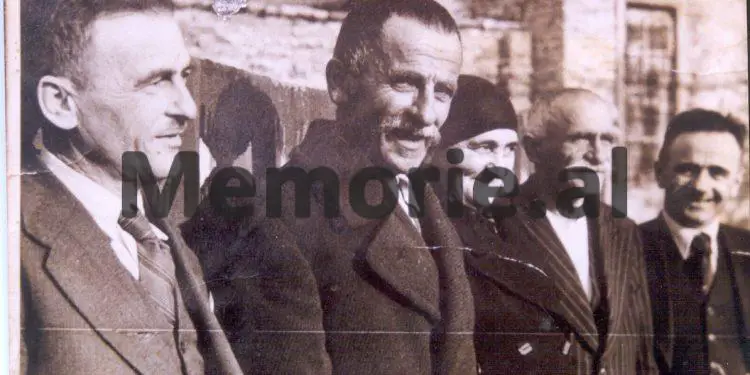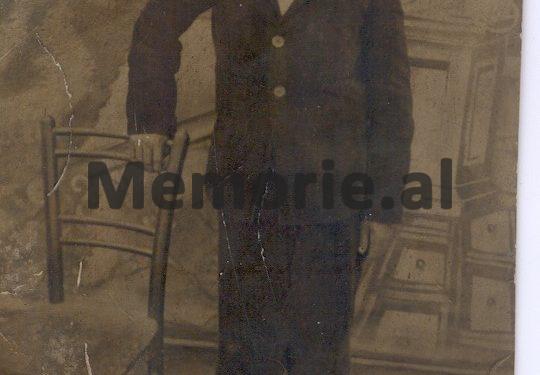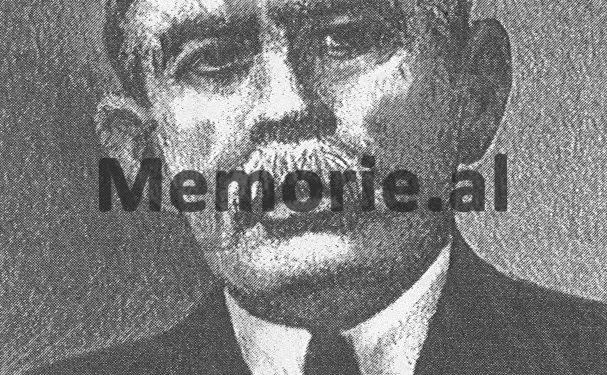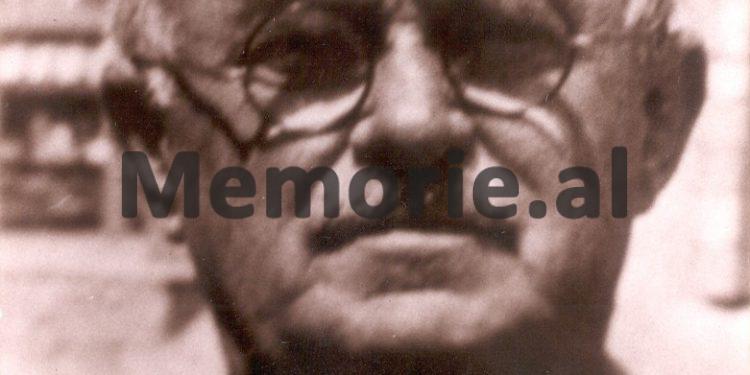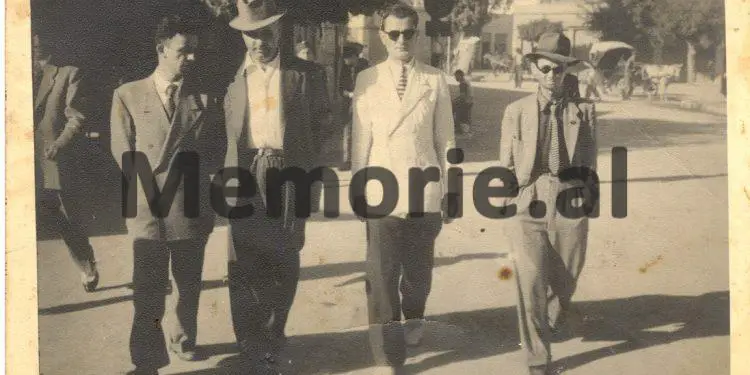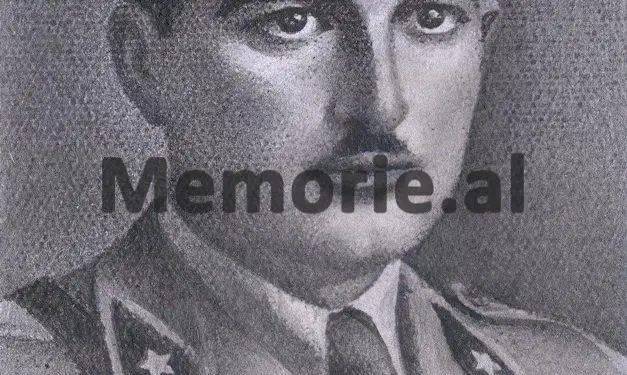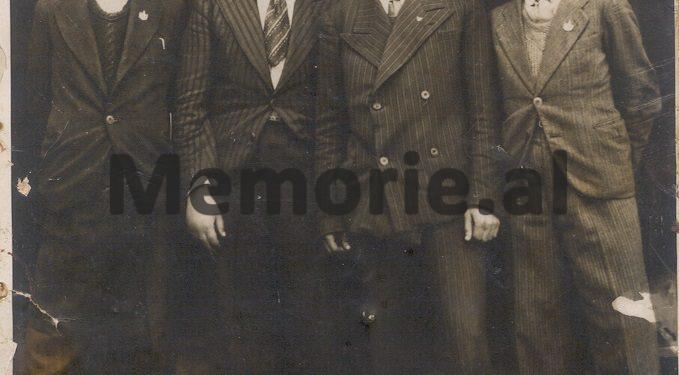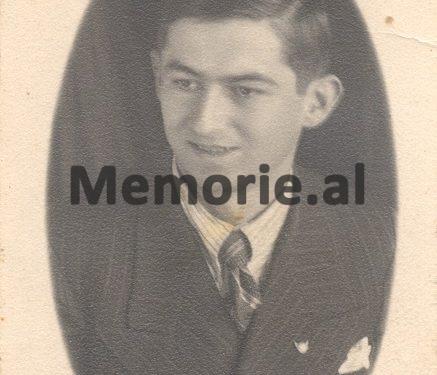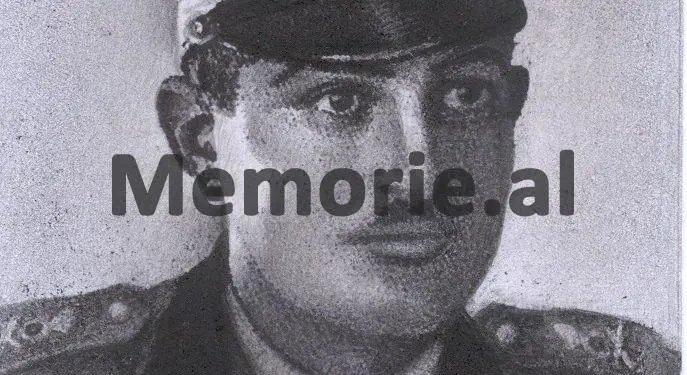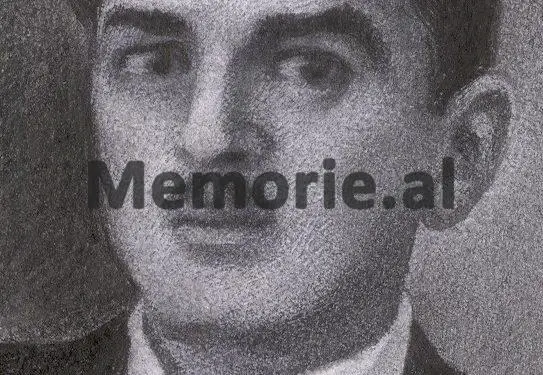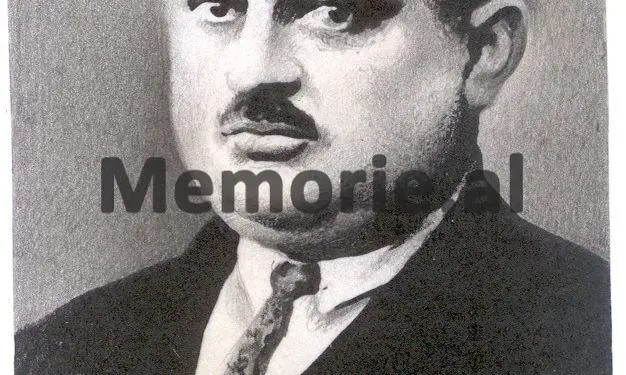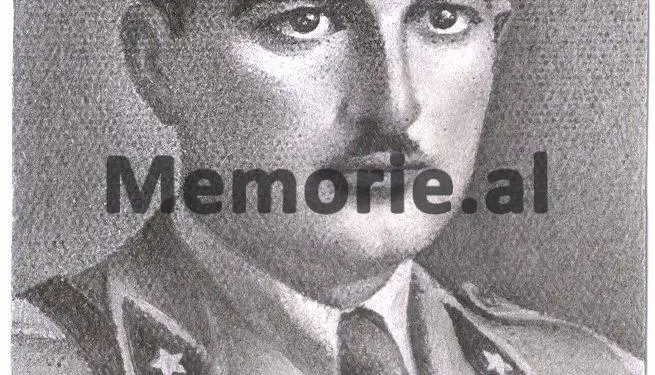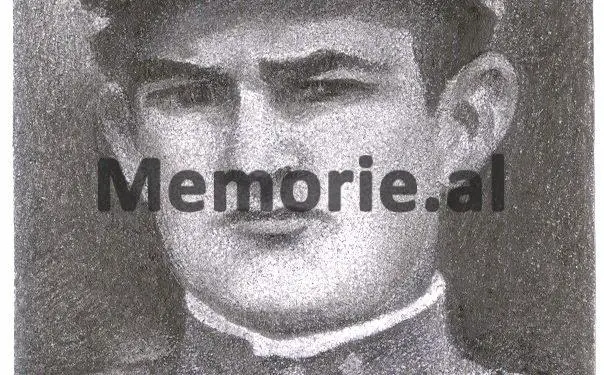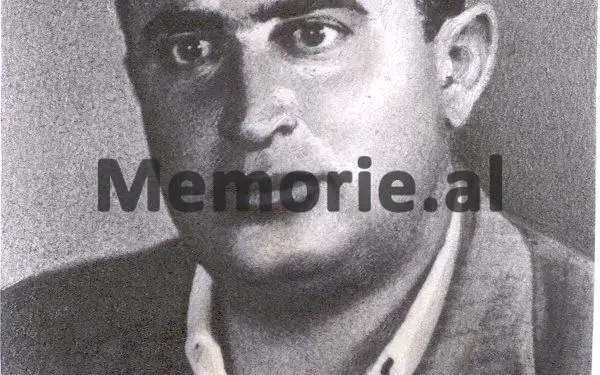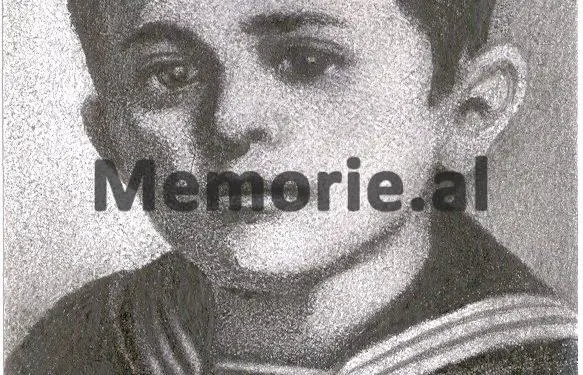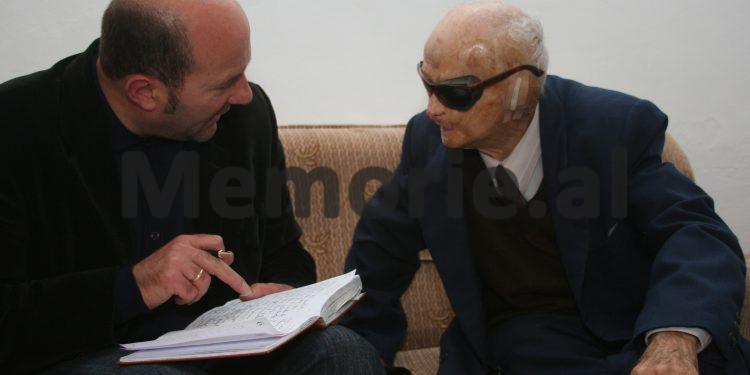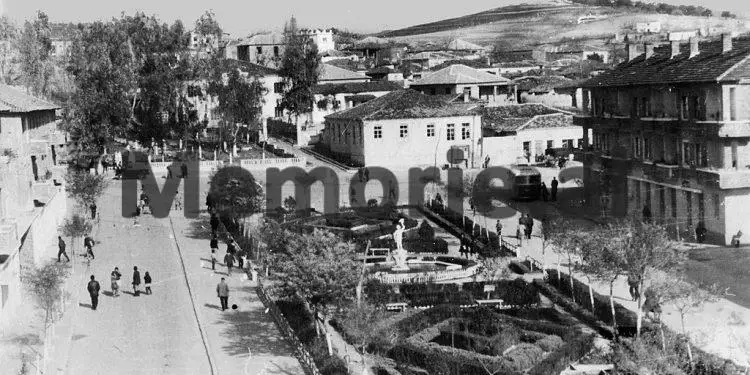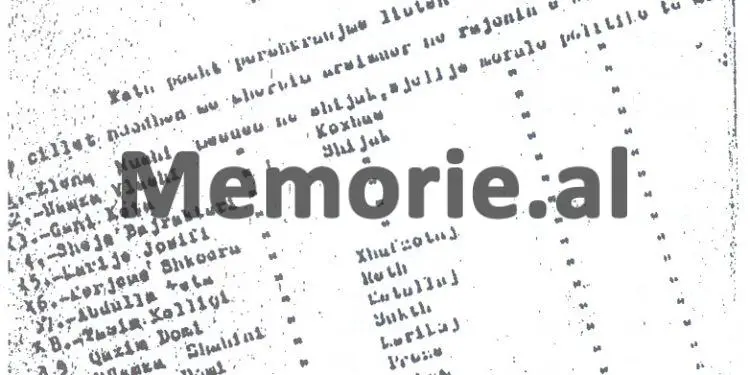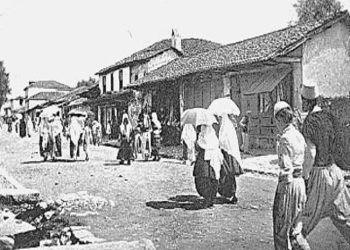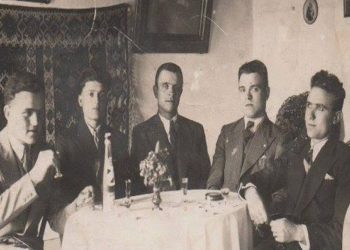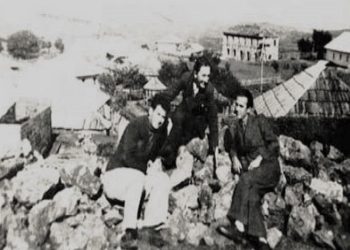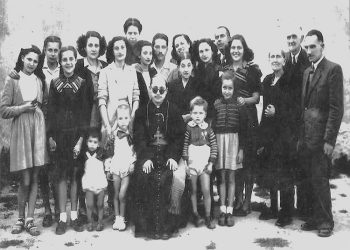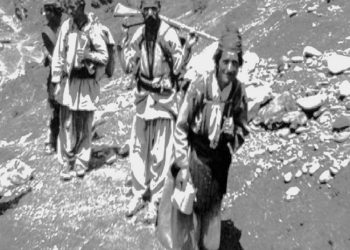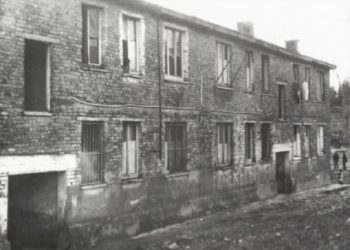Dashnor Kaloçi
Memorie.al publishes the unknown story of the great Deliallisi family from Central Albania, whose earliest origins are from distant Persia, and its ancestors have been known as the founders of the Shijak town since 1885, when the first of these the tribe, Sali Bey Deliallisi (Shijaku), descended from Shahinaj village and settled in the center of today’s Shijak, where he set up the first shop, which is also known by the renowned Zogu Monarch researcher, Teki Selenica, of which confirmed it in his book, “Albania in 1927”. Engagement of the Deliallisi family in the movements for seceding the country from the Ottoman yoke, where two of the men of this tribe, Xhemali and Imer Deliallisi, participated as delegates and representatives of Shijak in proclaiming Albania’s independence in Vlora on November 28, 1912. and then at the Lushnja Congress in 1920, where Imer was elected senator of Durres along with Mytesim Klicic, Irfan Ohrid and Veli Kraj.
The education of the boys of that family at the military academies of Italy and Turkey during the period of the Zog Monarchy, such as Mustafa Deliallisi, who after graduating from the Torino Military Academy, served as head of the Recruitment Office in Librazh and Mat, to was subsequently appointed as Commander-in-Chief of the Ulcinj and Shijak Gendarmerie, where he was captured April 7, ’39, fighting alongside Major Abaz Kupi against the Italians. Their involvement in the Anti-Fascist Movement, such as Captain Mustafa Deliallisi, who sent out large sums of aid to Peza’s Ceta after having close friends Shaqiri and Myslym Peza, who wanted to join that group but encountered opposition from senior Communist leaders attending. near her. Riza Deliallis’s testimony of how the Communist crackdown on that large family, where the War was not yet over, the Partisans executed without trial in the villages of Arbana, Kapllan, Jakup, and Shefqet Deliallisi, in 1946 they strangled Beqir Deliallis in torture. In 1947, Tefik Deliallis was shot dead with the “Group of Deputies”, in 1948 they were shot dead, in Delip Deliallis, in 1950, they killed Captain Mustafa Deliallis and Bujar Deliallis who committed suicide in prison by torture. continued where most of that tribe ended up in the prisons and internment of the Enver Hoxha communist regime.
“Enver Hoxha’s Communists had begun attacking our great Deliallisi family since the War, in early 1944, when they killed without trial in the village of Arbana, my father’s first two cousins: Kaplan Dalip Deliallisi, and his brother, Jakupin. The same day, along with Kaplan and Jakupi, the Communists executed their nephew, Shefqet Ymer Deliallisi. As if these three victims were not enough for our tribe, shortly after the end of the War in 1945, the Communists arrested Beqir Ymer Deliallis and tortured him in the Durres prison without trial. Following Beqiri’s assassination, the Communists arrested Tefik Masar Deliallis, accusing him of collaborating with the “Group of Deputies” and shot him on the bank of the Tirana River. After this, in 1948, Kaplan’s son, Dalipi, who had gone up the mountain after his father’s murder, was killed in an attempt by the State Security Forces and Tracking Wards to kill the Communist oppression. At that time, Mustafa Deliallis, the last son of Dalip Bey Deliallis, was also killed in an attempt by State Security forces. The brutal genocide of the Communists against our family did not end with the killing of these seven men by our tribe, as at that time, under the great pressure of the State Security, committed suicide in prison, also Shaqir Deliallis’s son, Bujari, who At that time he was not yet in his twenties and was the last to lose his life in the terror of the Communists because later on, other men from our tribe, including Abaz Mersin Deliallisi, Selami, were arrested and fined. Shaqir Deliallisi and Skender Gani Deliallisi. Also in 1948, I was arrested by the Communists and I was tortured by them inhumanely for four months. ” This is how Riza remembered Xheladin Deliallisi, one of the oldest men in the great Delialli family, who recounts to us all the tragic stories of his tribe. What is the past of the Deliallisi family and who were the two wise men of that house in Central Albania, who signed with Ismail Qemali in Vlora the act of proclaiming Albania’s independence in November 1912? Who were the other prominent men who came out of that large family, where they had graduated, and what their fate was, in the period of the Zog Monarchy, in the years of Nazi-fascist occupation of the country, and in the communist regime of Enver Hoxha?
Family of Persian origin, who founded the city of Shijaku
It is not known precisely and there is no record of how old the Delialli tribe was and when they settled in the Shijak area where their descendants still live. But according to the testimony of Riza Deliallis, who has been researching and collecting data on the origin and history of his tribe for years, the Deliallis’ early ancestry is from Persia. Regarding this, Rizai testified: “As 60 years ago my uncle, Ramazan Deliallisi, told us in a conversation with Sheh Dyrri (the Helveti Tariks in Tirana, who had his tekke behind the great Palace of Culture where years ago he was selling cereals), with whom he had a close friendship, he said: ‘Come on, I have a document for your family’s origin’. Sheh Dyrri had emphasized to Zani, saying that your tribe ‘Deliallisi’ had arrived in our country hundreds of years ago, during the Turkish rule, after moving from Persia where Harasani was surnamed. It is likely that this was indeed the case, as with the surname Harasani, there are still some families in Tirana today. Our tribe of Deliallians must have come to these areas where we live today, from the end of the fourteenth century or the beginning of the fourteenth century. About 1875, the tribe of the Deliallians from whom Sali Bey descended, descended from Shahinaj village and settled here, establishing the future city of Shijak. This is also confirmed by Teki Selenica in his book Albania in 1927, which states that; Sali Bey founded the city of Shijaku in 1880. This is why our family’s ancestors are also known by the surname Shijaku. This is evidenced by the tombstone of our uncle, Haziz, where it is written: ‘Sorry, young and brilliant boy, with character and patriot Haziz Bey, son of Haji Sali Bey Shijak’. How old our tribe is, I cannot determine precisely, as our ancestors did not leave us any precise documents, but according to the data I have collected and those shown, we must be the oldest tribe in the Taskin. From some documents recently discovered, the surname Deliallisi must have been taken from 1920-’21, which is also argued with the tombstone of Aziz Bey, who died in 1917 and where the surname Shijaku is written. Another argument is the tombstone of Masar Deliallis, where it is written: ‘Brethren, I am Masip of Delip Bey, killed by treacherous people, martyred in the service of the homeland, say past. Among the first to be recognized by our tribe were Abaz Bey, Pasha Bey, and Hamza Bey, who lived around the fourteenth century. We do not have any data on these three, so I am starting the story of our tribe’s history, with Abaz Shijak (Deliallis) who lived from 1810 to 1880. Abbas with his sons and family lived in the village of Shahinaj of Shijak, at that time Shijak did not exist at all and there was only one forest here. Abazi died of a cardiac infarction in the village of Çalaj-Barzez, to the Duke family who had friends where he had gone with his gendarmes to pursue committees. After Abbas’s death, his son, Delip Bey Shijaku, took over his place, who ruled the entire area until his death. While after the death of Delip, other men from our tribe came again to the top of the Shijak area, starting from Imer, Kaplan and Masar Deliallis. As our ancestors have told us, from the sons of Abbas, Sali first left Shahinaj in 1885 and came to Shijak, where he opened a shop and founded the later city. After Sali came his other brothers, as well as villagers from other tribes until Shijak became heavily populated and became the capital of the area. One of Sali’s sons was Xhemali, who in 1912 attended the raising of the Flag in Vlora with Ismail Qemali and his photo is in the Shijak Museum. Along with Xhemali, raising the flag in Vlora in 1912, was also Imer Bey Deliallisi, who participated as Shijak’s delegate in the Durres Congress in 1918, where he was with Rexhep Jella. While two years later, as Shijak’s delegate, Imer attended the Lushnje Congress in 1920, where he was elected senator of Durres along with Mytesim Kelic, Irfan Ohri, and Veli Kraj. After Masar Deliallis, who was an officer of Zog and was killed in the line of duty in suppressing the Mirdita Uprising in 1921, others from our tribe were also in charge of the Shijak Gendarmerie, both during and during the Monarchy. fascist occupation. One of them was Mustafa Deliallisi, who, after graduating from Italy’s military academies, served as a career military officer during Zog’s Monarchy, and from 1943 to ’44, served as Commander of the Gendarmerie for the Shijak area. The first captain ”says Riza Deliallisi about the origin of his tribe.
Abaz Bey Shijaku (Deliallisi) 1810-1880
Abbas is seen to have lived at the time of Turkish rule and has been married twice. His first wife was from the family of Rrogozhina (Latif Aga, today Dedja) and with this woman he had three sons and three daughters: Saliu, Abdullah, Dalipi, Pasha, Kaja, and Qamilen. He took his second wife to the Çelaj family in Mat, (Patin village) the sister of Kurt Bey Çela, (we used to call him subordinates), his name was Sadije and with him, only one son was born, Ahmet, Rap’s father, Ahmet was called and this also, that when his father died he left him in his mother’s womb. Abbas lived about 70 years and died around 1880. During this time, he served as the first of the villages of Shijak (a gendarmerie commander in Turkish times), a position he held until the end of his life. We are now describing the sons and daughters of Abbas according to their age, beginning with the first, Sali (1833-1912). As our ancestors told us, Sali was the smartest of the four brothers who consulted with him. He was a working man and spent his family life better than other brothers economically. He first came down from Shahinaj and came and founded Shijak, which was a forest, building his family’s residence, and he himself opened a shop around 1885. After Sali, his brothers and other peasants came to Shijak. So Shijak populated and became the capital of the area. Saliu has been married twice: The first woman from the large family of the Kurtushajs in Ishem (Ethem Aga) and with him gave birth to Seit who died young and left Veiba, Mustafa Basha’s mother. He took his second wife (after the death of the first) to the Kercikaj family in Tirana (Mustafa Kercik’s sister, Sulejman’s aunt) and bore him: Xhemal, Qerim, Aziz, and daughter Hyzie. This was called Tushe.
Seit died young, 27, and he married the daughter of Ashraf Efendi, a financier in Shijak, and left with him only Veiba, the mother of Mustafa Basha, who lives in Durres. Weibja married Osman Basha (known and called Mustafa Haji Ibrahim in Kavaja) and gave birth to Mustafa Basha who now lives in Durres with his family (our nephew).
Jemal married in Kruja in the Belgian family, with Hanka and bore him Sali, Kimet, Hatij, and Fiqeret. Kimetja with Hatija died young and childless, and Saliu with Fiqireteen settled with their families in Tirana. Saliu died in 1980. Xhemali was a patriot, participated in raising the flag in Vlora with Ismail Qemali 1912. His photo is in the Shijak Museum.
Qerim married into the Kenyan family in Durres, with Rexhep Kenja’s sister, Xhemailen, and fathered Mehdi, Irfan, Agim, Kudret, Hope and Luljeta, all married. Qerim died young leaving orphans. Of Qerim’s children, Mehdi and Hope have died and their families are in Durres and Tirana. Irfan and Dawn with their families are in Shijak, Luljeta in Tirana and Kudreti in Durres.
Haziz has been, in the words of our parents (and written on the tombstone), the best of Sali’s children, his father’s copy, clever, brave, character and patriotic. Died young. He married Jemaah the daughter of Hysen Subashi from Kruja and gave birth to Servet, Myzejen, and Murat, who died young without marrying. Servet and Myzeen are already dead and their children are in Tirana. Myzeen had no children.
Hyria married Hasan Agha Beshiri in Tirana and gave birth to Dyrri, Behidzhi, Ballkizen, Ylvija and two eldest married daughters in Vlora to Sorres, Sadija, and Haxhiren. So Hizia gave birth to 6 children, 5 daughters and one son, Dyrrin. Thus ends the belly of Salij Bey Deliallis (Shijak).
Founder of Shijak – Abdulla Deliallisi (1833-1916)
As our fathers point out, Abdullah was a hardworking, regular family man, and impartial with their sons and daughters-in-law. Abdullah has been married four times. He got his first wife from the family of Ishmi’s Kutushaj and uncle with his first brother Sali, also twin was born together, an hour before Sali was born and was known as the eldest. With this woman (Gyulijen) was born Mersin and Peren. With his second wife, Qamiljen, both from the Çela family, only one daughter, Aishen, was born. With the third wife he had received in Kruja from the great Varozhe family, Gjyzen, he gave birth to Xheladin (my father) Hajdije and Tusha. With his fourth wife, Fatima, she gave birth to Ramadan and Rifat. Fatima was from the Bulku family, Mustafa Bulku’s aunt.
Mustafa Deliallisi, with Gold Medal at the Torino Military Academy
One of the most prominent men of the Deliallisi family during the period of the Bird Monarchy was Mustafa who graduated from the Torino Military Academy. Concerning his education and military career, Riza Deliallisi told us: “Mustafa was born on May 20, 1911, in Shijak town, and he was the son of Dalip Bey Deliallis, one of the most respected figures in the Shijak area. , as did Hasan Deliallisi, who led the Shijak Volunteer Battalion “Erzeni” in the Shkodra War in early 1913. Mustafai was the last child of Dalip, before him Ganiu, Ymeri, Masari, Kaplan, and Jakupi. After graduating from the six-year High School in his hometown here in Shijak in 1924, Mustafai moved to the city of Shkodra and enrolled in the classical gymnasium, which he completed in 1928. After graduating from the gymnasium, Mustafai expressed a desire to attend. A military school, as did his two older brothers, Masari and Ganiu, who had completed military school in Turkey, or Jakupi in Tirana. Departing from his wish, in 1928 Mustafa went to Tirana and for two years attended the course of the Officer Training School, which was then opened by King Zog, under the care of Italian officers. After completing that course in 1930, Mustafa gained the right to study at the Turin Military Academy in Italy, which he completed in 1933, with very high results, being awarded a Gold Medal. Upon his return to Albania, Mustafai was appointed commander-in-chief of the Recruitment Office in the city of Librazhd, where he stayed no more than six months after being transferred to Burrel on the same assignment. In the province where King Zog was born, Mustafa became friends with his career officer, Bilal Kola, becoming blood brothers. During his time in that city, Mustafa had a close friendship with another patriot, Ali Jhetani, who is a respectful way offered him family ties, giving his wife, Fitneten, a wife. After the marriage that took place in 1934, a year later they had their first child, called Beauty, and then a son, Agim, who died after seven months, ”recalls Riza Deliallisi regarding the most prominent men in the tribe. his, Deliallisi.
Mustafa Deliallisi, on April 7, 1939, in Durres
On April 7, 1939, when fascist Italy carried out military aggression invading Albania, Mustafa Deliallisi went to Durres and, along with Gendarmerie Major Abaz Kupi, took an active part in the symbolic resistance to the Italian troops. Concerning this period of time and his military activity during the years of the occupation of the country, the famous painter, Agim Faja, who comes from a branch of the Deliallian tribe, wrote in his memoirs, inter alia: “On the seventh day In April 1939, when some Tijakian volunteers, along with others from Tirana, were trying to blow up Shijak’s beautiful bridge over the Erzen River as they threw it, Mustafai opposed the move. As a career soldier who knew the Italian army well, Mustafa told them that their troops had garrison units, not Erzen, but no other river could become an obstacle for them. (“Such beautiful bridges are not easy to make,” Mustafa told those volunteers who were undermining the Shikaju bridge.) And so it was when the Italians found the Erzen Bridge collapsed, they crossed the Salmon Bridge, (or the bridge of Sulejman Golem) and after returning from the hills of Koxhas, heading to Shilor, traveled towards Tirana. After the Italian occupation of Albania, like many other Zog monarchies, Mustafa responded to the call to serve in the restructured Albanian National Army at the time. Given this, Mustafa was sent to Montenegro with the duty of Ulcinj’s Recruitment Officer. During his nine-month stint in office, he took care of many of the Albanian prisoners serving his sentence in that town and helped some to escape. Mustafai was forced to flee Montenegro after a conflict that arose when he removed the Montenegrin flag from the city hall and placed the Albanian flag in its place. After that conflict, Mustafai resigned and rode a motorbike to Shkodra, but on the way, he was assassinated by several Montenegrins who managed to injure him and he collapsed on the groundbreaking his arm. After leaving the assassins, who fled thinking they had been killed, Mustafa was taken by a shepherd who treated him for two weeks at his home. After feeling he was done well, Mustafai headed to Shkodra and then came to Shijak on his own motorbike “,” Merit Painter “Agim Faja from Shijak writes about Mustafa Deliallisi, whom he researched long with oral testimonies and memories, and in archives.
Mustafa, Shijak’s commander-in-chief
Regarding Mustafa Deliallisit’s activity, after returning from Montenegro to Shijak, Agim Faja wrote: “Upon arriving in Albania, Mustafai was appointed to the Tirana and Durres recruiting branches, but his dream was to serve as Commander-in-Chief of the Gendarmerie Shijakut. This was due to the fact that in the past, since the Shiites were considered to be a rebellious and disobedient population, they had served in this capacity scribbles and boils, such as Riza Cerova, Zalo Qafa, Ahmet Kajca, Xhevdet Gjoleka, Bajram Guri etc… At the beginning of 1942, Mustafai joined Father Myslymi’s Peza group and helped him by sending caravans of food and other supplies he carried through the villagers of the Kodras. During that time he also went to Peza, where he met Mustafa Gjinishi, Iljaz Reka, Kajo Karafili and others. In addition to them, he had a great friendship with his two brothers, Shyqyri and Myslym Peza, whom he had known for years. Although Mustafa was a nationalist and had deep anti-Communist convictions, he was extremely tolerant of the Communists and did not see them as enemies. This is also related to the great help he and his brothers, Kapllan, Jakupi, and Shefqeti, gave to Minella Toci, the leader of the first Communist Party cell that was established in Shijak in 1943. This Mustafa’s attitude had impressed Mustafa Gjinishi, who reportedly thought to bring Deliallis to Peza. But this was not approved by the other Communist leaders, who then set up ambushes to assassinate Mustafa Deliallis, but failed because he understood their purpose and left Peza for Shijak, not on the national road, but walking up the hills. Mustafa has since severed all links with the Peza group and this is confirmed by an archive document (No. 195/5 dated 29.10.1942) which states, inter alia: consists of the personal enemies of the Peza family, which are the Deliallis in Shijak and Jahja Mancaku in Ndroq”. Memorie.al
follows tomorrow




